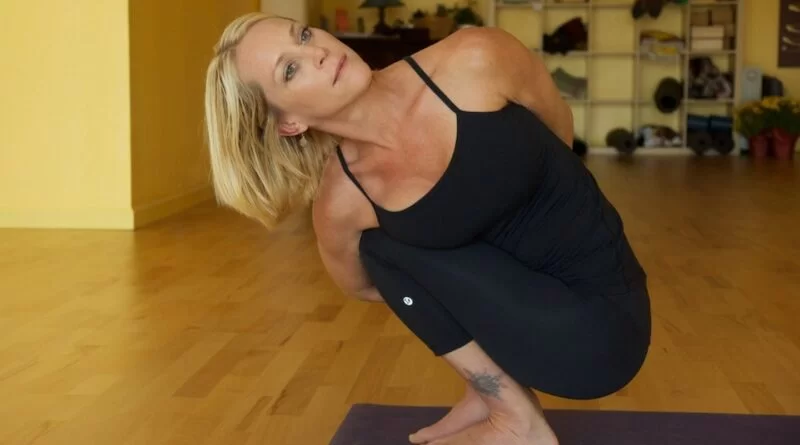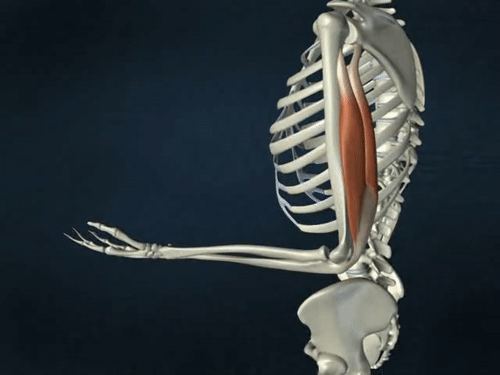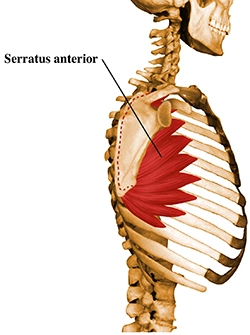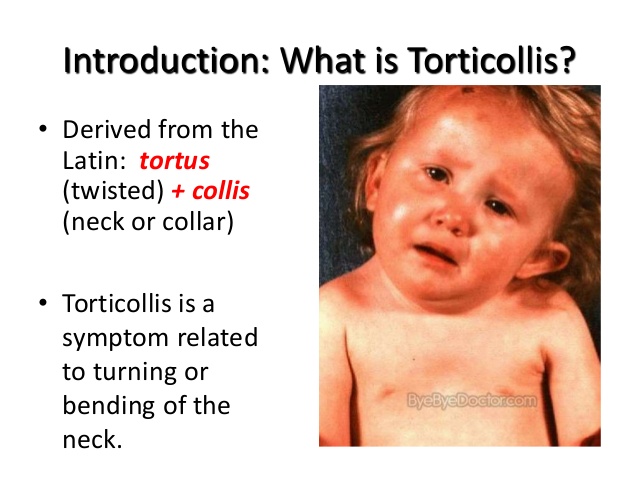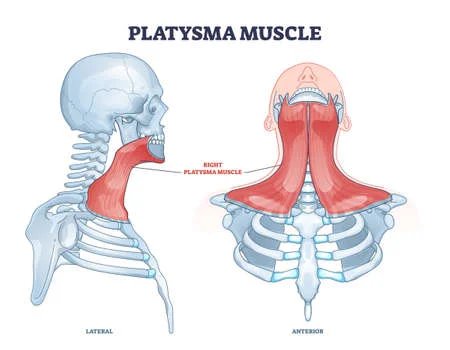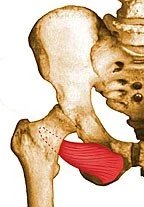Pasasana (Noose Pose)
What is Pasasana (Noose Pose)?
Pasasana or noose pose is the 1st posture of the Ashtanga yoga moderate sequence and combines in-depth twisting and an in-depth squat. You’ll require a good grasp of both of these elements to start.
Only like other bending poses, Pasasana supports detoxifying the inner organs. It even supports preparing the shoulders and back for deep back turning.
Accomplishing a twisting in a deep squatting position provides you stability in your legs, providing the foundation you need for more challenging postures.
To bring into the twist required for this posture, you will need flexibility and articulation of the thoracic backbone. Many twistings movement require you to raise through the centerline and move along the body’s central axis.
Noose pose is various because it requires a sideways stretch that drives your body off the centerline so you can protect both of your legs.
Steps to perform Pasasana or Noose Pose:
- To begin with, perform Tadasana (Standing pose)
- Lower yourself to a complete squat.
- Get your buttocks close to your heels.
- Provoke your torso against your thighs.
- Bend your body from the abdomen to the right. Get your left arm to the outer side of the right knee.
- Cover your forearm around your right shin.
- Extend your right arm behind your back and grasp your left wrist.
- Turn further if possible and bend your head to the right while pulling your shoulder edges towards each other.
- Maintain your feet firmly implanted and flat.
- Lengthen your sternum as far as feasible, while breathing in.
- Breathe out while twisting additional for the full effect.
- Maintain the posture for five breaths.
- Replicate on the other side.
Pasasana (Noose Pose) Video
Benefits of the Noose Pose or Pasasana
- Support in the Digestive system.
- Enhance spine flexibility.
- Strengthen thighs, groin, knees, and ankles.
- Can relieve asthma.
- Stimulates the abdomen.
- Reduces shoulder, neck ache, and backache.
- Strengthens thighs, groin, ankles, and knees
- Boosts blood circulation in the torso and thus enhances the nervous system’s function.
- Energized the full body.
- Release tightness from shoulder and upper back.
- Open up the chest region.
- Enhances lung capacity.
- Reduces menstruation pain.
- Enhance adverse impacts of sciatica.
Modifications
Utilize the following support to efficiently change the noose pose.
Blanket – Set a folded blanket under the heel if there is a gap between the ground floor and heel while maintaining the pose.
Yoga blocks – Stack some blocks one over the different. As you conduct the squat you can relax your buttocks over the blocks.
Against the wall – conduct Pasasana (noose pose) against a wall. You can bring your hands to the wall after arriving down to the squat as you twist. It supports to balance of the body while maintaining the posture.
Variations
Once mastered the basic noose pose, execute these deviations to deepen the posture.
Pasasana with one leg – Seat on your feet with buttocks over the heels. Your arms lie among your legs in a facade of you. Cover your left arm from behind to relax your left hand over the right thigh. Then grab your left wrist with the right hand around your right shin, moving the right armpit towards the inner right knee. Rotate your head towards the left shoulder.
Twisted Toe-stand Squat – Conduct a full squat. Lift your heel and balance on your toes. Then, twist from your torso to your right and move your left armpit beyond your right outer knee. This opens the chest to the right. Now join your hands in a devotion pose pressing your chest and looking over the right shoulder.
Precautions & Contraindications
Don’t let your heels lift off the ground floor by concentrating on maintaining the ground floor.
While squatting fully don’t lose the foundation of the posture by getting the buttocks to the ground floor.
Be mindful while breathing throughout the pose. Avoid it with a lower back injury or surgery.
Don’t rehearse the noose pose in case of a herniated disk.
If you have a damaged knee then it isn’t advisable to avoid the whole squat.
Individuals with spondylitis or arthritis must not try the noose pose.
Conclusion
If you aren’t sure about your body condition being fit for Pasasana (noose pose) you should consult your available physician. Talking to a yoga instructor (yoga guru) may even support you attain perfection with the Pahasana. It is more useful to practice caution when you prolong yourself.
FAQ
1. How to perform Pasasana (Noose Pose)?
Start in Tadasana (Standing pose)
Lower yourself to a whole squat.
Obtain your buttocks close to your heels.
Press your torso against your thighs.
Turn your body from the abdomen to the right.
Cover your forearm around your right shin.
2. What are the benefits of the Pasasana?
Gives physical relief.
Enhances your flexibility.
The pressure of the spine.
More excellent awareness.
Taking more understanding of body movement.
3. What are some variations of the Noose Pose?
Toe Balance.
Twisted Toe Squat.
Toe Squat Pose Head To Knee.
Pistol Squat Pose Holding Foot.
Broad Toe Balance Pose Variation.

